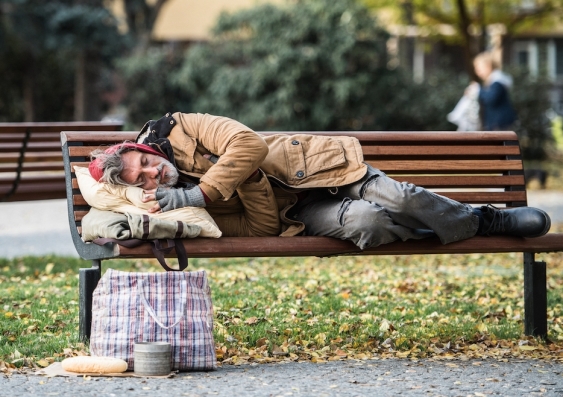The numbers of people who are homeless have risen sharply across Australia, with soaring housing costs emerging as the biggest driver of the increase. The , released today, reports that the average monthly number of people using homelessness services increased by 8% in the four years to 2021-22. ThatвҖҷs double the population growth rate over that period.
Just , the 2020 COVID-19 emergency accommodation programs achieved in cities such as Sydney, Melbourne and Brisbane. But these remarkable gains were only temporary.
In the first major homelessness analysis spanning the COVID crisis years, we also show numbers have been rising in some parts of the country at rates far above the national trend. The problem has been growing especially rapidly in non-metropolitan areas. This trend is consistent with the boom in regional and, more especially, sparked by the pandemic.
The homelessness that has long been a sad feature of our biggest cities has clearly spread to regional and rural Australia.
Many other patterns in the changing scale and nature of homelessness in Australia are ongoing trends that pre-date the 2020-21 public health emergency. This period appears to have had relatively little effect on these trajectories, which include a growing proportion of older adults, as well as First Nations peoples and those affected by mental ill-health.
As the chart below shows, is playing an increasing role in people becoming homeless.
Social housing programs are welcome but overdue
The pandemic triggered significant and welcome commitments to social housing programs by the new federal government and some state governments. The recent federal budget confirmed funding for over five years.
Several states had already announced a set of as part of their post-COVID economic recovery measures.
Social housing offers secure tenancies at below-market rents. ItвҖҷs for both preventing and resolving homelessness.
Together, these new programs will вҖ“ at least temporarily вҖ“ halt the long-term decline in social housing capacity. The sectorвҖҷs share of the nationвҖҷs housing stock has been .
Read more:В
By our reckoning, the government programs should deliver a net increase of about 9,000 social rental dwellings in 2024. This will be the first year for decades in which enough dwellings will be built to maintain the sectorвҖҷs share of AustraliaвҖҷs occupied housing stock.
But sustaining this achievement will require more funding beyond the current commitments. Otherwise, the decline will resume.
Affordability is the big issue, but some need other help
As a recent Productivity Commission acknowledged, homelessness is primarily a housing problem. In , вҖңfundamentally, homelessness is a result of not being able to afford housingвҖқ.
While other reasons do contribute to some people becoming homeless, most people experiencing homelessness have no long-term need for personal support. And many who do have high support needs can access and keep tenancies when suitable affordable housing is available.
At the same time, the most disadvantaged rough sleepers may require a great deal of help to overcome their problems. The вҖңhousing firstвҖқ model successfully does this. As emphasises, for many chronic rough sleepers helped into secure housing, withdrawing such support вҖ“ even after three years вҖ“ markedly increases their risk of becoming homeless again.
Australian governments need to better recognise the case for expanding the supply of permanent supportive housing. This involves integrating long-term affordable housing with ongoing support services where required.
Read more:В
Only a few such projects operate in Australia. There is no general framework to fund them, especially the support services.
Lengthy rough sleeping is typically a symptom of societal failure. All too often, for those affected, this failure starts from infancy.
Housing the chronically homeless pays for itself
The Productivity Commission report a вҖңhigh-needs-based [social] housing subsidy to ensure housing is affordable and tenancies can be sustainedвҖқ. Logically, since this is essentially a social work (not social security) responsibility, it is the states and territories, and not the Commonwealth, that should bear the cost.
This may sound like a big ask for underfunded governments. But state and territory budgets stand to benefit from avoiding the costs that recurrent and chronic homelessness imposes on departments such as health and justice. As our , we spend enormous amounts of public money responding to the consequences of leaving people in a state of chronic homelessness.
Read more:
A model for funding permanent supportive housing needs to be developed. Ideally, this process should involve all Australian governments, perhaps as part of discussions to advance the . Federal Labor this project will take shape in 2023.
More broadly, these deliberations must be underpinned by recognition that our current ways of developing, operating and housing produce homelessness. A plan to end homelessness requires a plan to overhaul our housing system so it produces enough suitable and affordable housing for all Australians.
The authors acknowledge research funder .

, Professor of Housing Research and Policy, and Associate Director, City Futures Research Centre, and , Professor, School of Social Science,
This article is republished from under a Creative Commons license. Read the .


